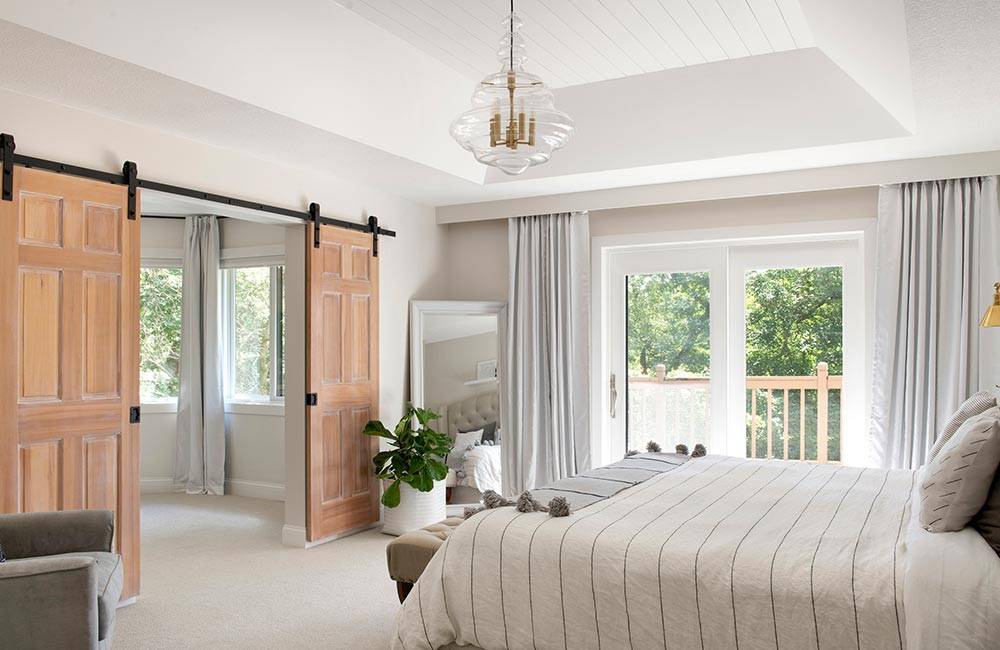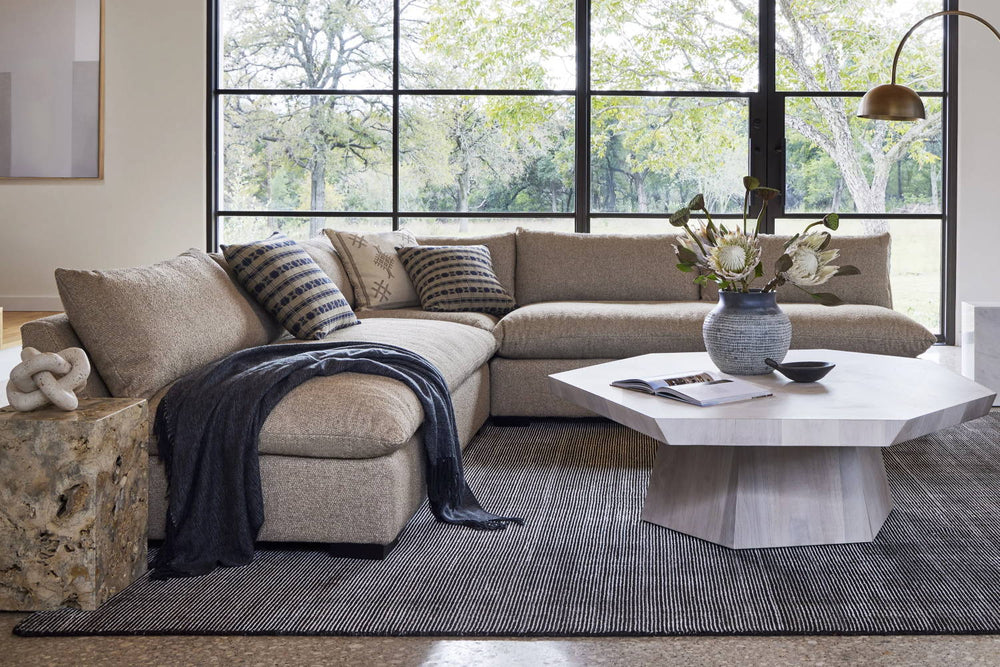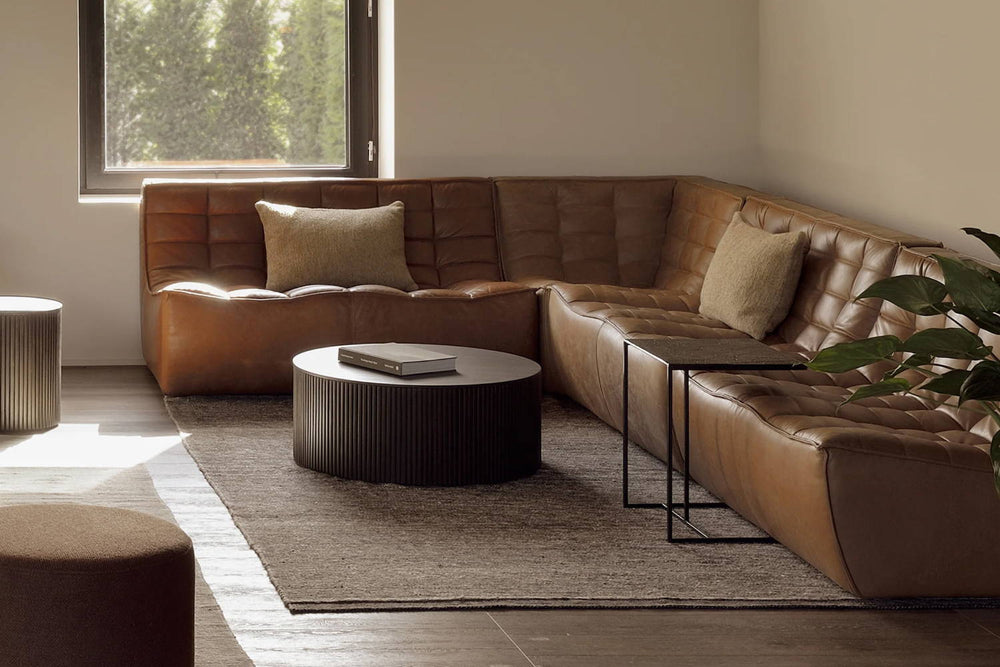Navigating the challenge of arranging furniture in a small living room can feel like solving a complex puzzle. However, with the right strategies, you can transform even the coziest of spaces into a functional and aesthetically pleasing haven. Whether you're dealing with a studio apartment, a compact urban loft, or a small house, thoughtful furniture placement can make a significant difference in how your living space feels and functions. In this guide, we'll explore practical tips and creative ideas to help you make the most of your small living room. From selecting the right furniture pieces and optimizing layouts to clever storage solutions and design tricks, we'll cover everything you need to know to create a comfortable and stylish living area.
Understanding Your Space
Arranging furniture in a small living room begins with a thorough understanding of your space. By establishing a focal point, creating distinct zones, and maximizing vertical space, you can make your room both functional and aesthetically pleasing. Let's delve into these key concepts:
Establishing a Focal Point:
-
A focal point is the centerpiece of your living room, drawing attention and anchoring the design. It could be a fireplace, a striking piece of artwork, a large window with a view, or even your TV. Here’s how to effectively establish a focal point:
- Identify Your Focal Point: Determine the most prominent feature in your room. If your space lacks a natural focal point, create one with a bold piece of furniture or artwork.
- Arrange Furniture Around It: Position your main seating area to face the focal point. This not only enhances the visual appeal but also promotes a cohesive and inviting atmosphere.
- Enhance with Lighting: Use lighting to highlight your focal point. For instance, place a spotlight on artwork or use ambient lighting to draw attention to a fireplace.
Creating Zones:
-
In a small living room, creating distinct zones helps in organizing the space effectively. This approach divides the room into different functional areas without physical barriers.
- Define Each Zone: Think about how you use the space. Common zones might include a seating area, a reading nook, or a workspace.
- Use Rugs and Furniture Placement: Rugs can visually separate different areas, while strategically placed furniture can define boundaries. For example, a sofa can act as a divider between the living area and a workspace.
- Multifunctional Furniture: Invest in furniture that serves multiple purposes. A storage ottoman can act as a coffee table, extra seating, and a storage solution, helping to maintain clear zones without clutter.
Maximizing Vertical Space:
-
In a small living room, every inch counts, including the vertical dimension. Utilizing vertical space can significantly enhance storage and the overall aesthetic of your room.
- Tall Shelving Units: Install tall bookshelves or cabinets to take advantage of the height of your room. This provides ample storage without taking up valuable floor space.
- Wall-Mounted Storage: Use wall-mounted shelves, hooks, and cabinets to keep the floor area open. Floating shelves can display books, plants, or decorative items, adding personality and practicality.
- Hang Curtains High: Hanging curtains close to the ceiling rather than just above the window creates an illusion of height, making the room feel larger.
By establishing a focal point, creating functional zones, and maximizing vertical space, you can transform a small living room into a well-organized, stylish, and comfortable area. Understanding and implementing these principles will help you make the most of your space, no matter its size.
Tips for Visual Space
Creating the illusion of more space is essential in a small living room. By employing strategic design choices, you can make your room feel larger, more open, and airy. Here are some tips to help you enhance visual space:
Use Light Colors:
- Choose a Light Color Palette: Light colors like whites, creams, pastels, and light grays reflect more light, making the room feel brighter and more open.
- Consistency in Colors: Use a consistent color palette throughout the room to avoid visual breaks that can make the space feel fragmented.
Optimize Lighting:
- Natural Light: Maximize natural light by keeping windows unobstructed. Use sheer curtains or blinds that can be easily pulled back.
- Layered Lighting: Incorporate multiple light sources, including ceiling lights, floor lamps, table lamps, and wall sconces, to create a well-lit room with minimal shadows.
- Mirrors: Place mirrors strategically to reflect light and create the illusion of depth. A large mirror or a collection of smaller mirrors can make the room appear more spacious.
Choose Furniture Wisely:
- Scaled Furniture: Select furniture that fits the scale of your room. Avoid oversized pieces that can overwhelm the space.
- Multi-functional Pieces: Opt for furniture that serves multiple purposes, like a sofa bed, nesting tables, or ottomans with storage.
- Transparent Furniture: Consider using glass or acrylic furniture, which take up less visual space and maintain an open feel.
Arrange for Openness:
- Float Furniture: Move furniture away from the walls to create a sense of flow and openness. Floating furniture can make the room feel less cramped.
- Clear Pathways: Ensure there is a clear path for movement. Cluttered pathways can make a small space feel even smaller.
Declutter and Streamline:
- Minimal Accessories: Keep accessories and decorative items to a minimum to avoid a cluttered look. Choose a few statement pieces rather than many small ones.
- Hidden Storage: Use furniture with hidden storage compartments to keep items out of sight and maintain a tidy appearance.
Strategic Use of Patterns and Textures:
- Subtle Patterns: Use subtle patterns to add interest without overwhelming the space. Avoid large, bold patterns that can make the room feel busy.
- Textures: Incorporate different textures to add depth and dimension without adding visual clutter.
By incorporating these tips, you can create a small living room that feels larger, more open, and inviting. The key is to balance functionality with aesthetics, ensuring that every design choice contributes to the overall sense of space.
Furniture Arrangement for Small Living Rooms
Sofas:
- Place the sofa against the longest wall or across from the focal point.
- If using a sectional or chaise lounge, position it to maximize seating and space efficiency.
- Consider low-back sofas to avoid blocking windows.
Media Consoles:
- Compact Units: In small living rooms, opting for smaller media consoles helps save precious floor space. Choose units that are less than 48 inches wide, ensuring they don’t dominate the room.
- Wall-Mounted Units: Floating media units are an excellent choice for small spaces. They can be mounted on the wall, which frees up floor space and provides additional storage underneath for items like poufs or small ottomans.
Bookcases:
- Vertical Storage Solutions: Utilize tall, narrow bookcases to take advantage of vertical space. Floor-to-ceiling bookcases are ideal as they provide ample storage without occupying much floor space. Consider incorporating a ladder for easy access to higher shelves and to add a stylish, functional element to the room.
- Built-In Shelving: If possible, built-in bookcases can blend seamlessly with the room's decor and offer significant storage while saving space. They can be designed around architectural features like bay windows to create cozy reading nooks with storage underneath.
Coffee Tables:
- Nesting Tables: These are perfect for small living rooms because they can be tucked away when not in use. They provide flexible options for entertaining or everyday use without cluttering the space.
- Ottomans: An ottoman can double as a coffee table and provide additional seating or storage. Look for ottomans with hidden storage compartments to keep the area tidy.
- Small, Round Tables: Round coffee tables are easier to maneuver around and can soften the look of the room. They are also less intrusive than larger rectangular tables.
Benches:
- Versatile Seating: Benches are highly versatile and can be used in various parts of the living room. They can act as additional seating, a coffee table, or be placed under windows to create window seating with storage underneath.
- Storage Benches: Benches with built-in storage compartments are ideal for small spaces. They can store items like blankets, magazines, or toys, helping keep the living room organized and clutter-free.
Chaise Lounges:
- Positioning: Place a chaise lounge in a corner or against a wall to utilize space efficiently. It provides a comfortable spot for relaxation without overwhelming the room.
- Integrated with Sectionals: Many sectional sofas include a chaise lounge component, which can be arranged to maximize seating and comfort. This combination can help define different zones within the living room while maintaining an open and cohesive layout.
Arranging furniture in a small living room requires a blend of creativity, practicality, and a keen eye for detail. By carefully selecting versatile furniture, utilizing vertical space, and embracing smart storage solutions, you can create a living area that feels spacious and inviting despite its size. Remember, the key is to prioritize functionality without sacrificing style. Consider the flow of movement within the room, ensure that your layout promotes comfort and conversation, and don't be afraid to experiment with different configurations until you find the perfect fit. With these tips and a bit of ingenuity, your small living room can become a stylish, cozy retreat that meets all your needs and reflects your personal taste. Embrace the challenge and enjoy the process of transforming your compact space into a beautiful and functional living area.








